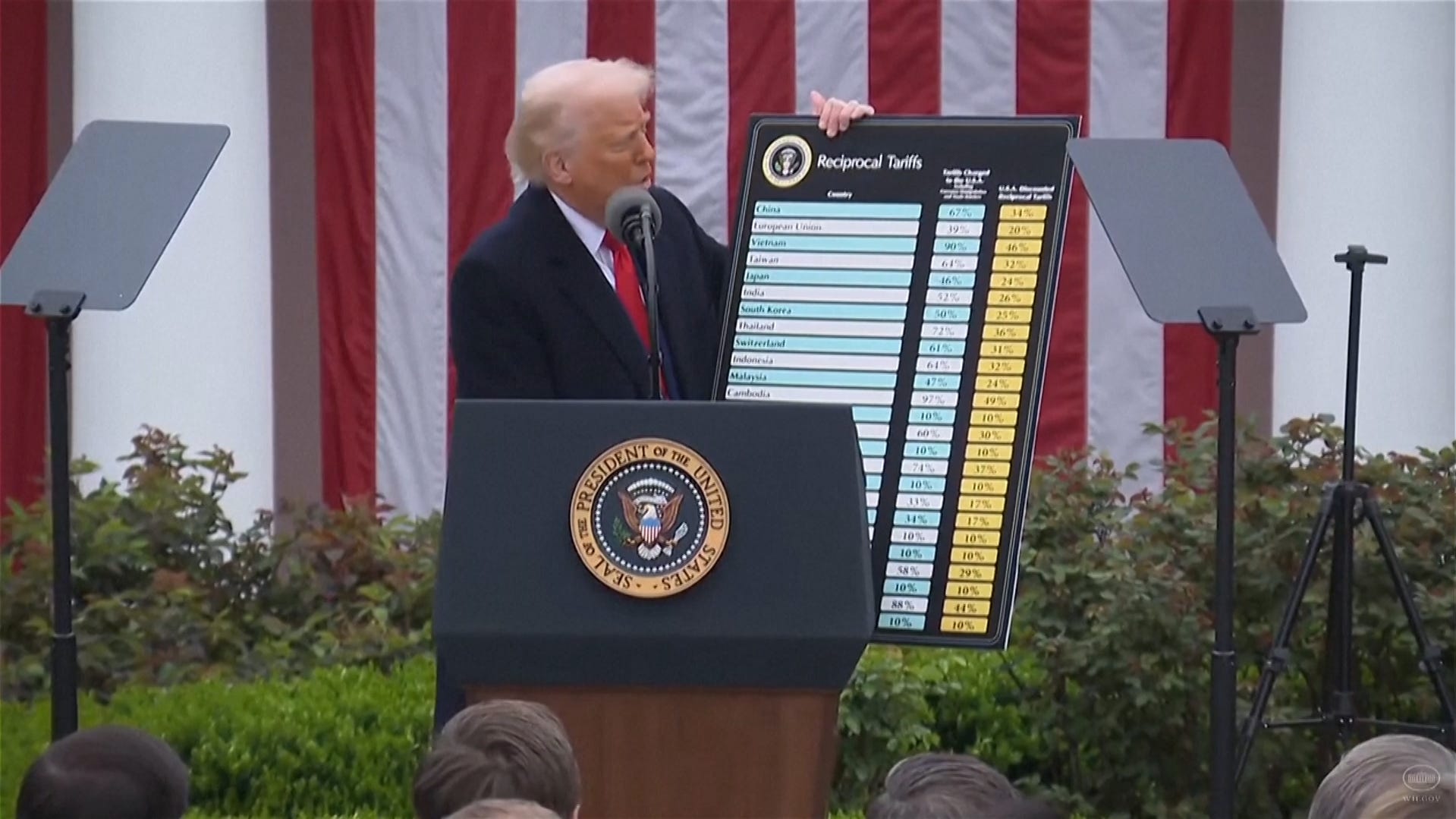Why is this scene from 'Ferris Bueller's Day Off' suddenly hot? Anyone? Anyone?

All this recent talk of tariffs has sparked fresh interest in an iconic scene from a great John Hughes film set in 1980s Chicago.
Anyone? Anyone?
The film is “Ferris Bueller’s Day Off,” a 1986 coming-of-age comedy that stars Matthew Broderick as an impish student who leads his friends in a day of cutting class on the streets of Chicago.
And the scene, oddly enough, is about tariffs.
Hughes, the director who also gave us “The Breakfast Club” and “Sixteen Candles,” had an uncanny gift for portraying the purgatory of high school.
In the 75-second “Ferris Bueller” clip, students sit, zombified, as a teacher attempts to engage them in dialogue on the Smoot-Hawley Tariff, a topic whose very name sparked titters in cinema audiences.
And what, exactly, is the Smoot-Hawley Act?
Smoot-Hawley, enacted by President Herbert Hoover at the start of the Great Depression, raised America’s import tariff rates, which were already high.
Here, we’ll turn the mic over to the incomparable Ben Stein, a former Nixon speechwriter who reinvented himself as an entertainer and earned a scene-stealing role in “Ferris Bueller” as a dull-as-dirt instructor.
“In 1930,” Stein deadpans, “the Republican-controlled House of Representatives, in an effort to alleviate the effects of the. . . Anyone? Anyone?”
Silence.
“The Great Depression. Passed the. . . Anyone? Anyone?”
Shots of slack-jawed students.
“The tariff bill. The Hawley-Smoot Tariff Act, which. . . Anyone? Raised or lowered? Raised tariffs, in an effort to collect more revenue for the federal government. Did it work? Anyone?Anyone know the effects? It did not work, and the United States sank deeper into the Great Depression.”
Stein proceeds into a discussion of the Laffer curve, an economic construct that depicts the relationship between tax rates and government revenue. As he drones on, the camera cuts to a close-up of a student asleep in a puddle of drool.
Bueller? Bueller? Bueller?
Stein’s main job in “Ferris Bueller” is to establish the titular character’s absence from school, which he does, in another memorable scene: “Bueller? . . . Bueller? . . . Bueller?”
The highly educated actor was first slated to provide only a voiceover. But his delivery proved so funny that Hughes put him in the film, teaching somnambulant students. Nothing had been scripted for the scene, so Stein was asked to teach something he knew.
“Stein taught about the Great Depression and the effects of tariffs on economic policy,” Susannah Gora wrote in her 2010 book on the Brat Pack, “You Couldn’t Ignore Me If You Tried.”
Stein later termed it the happiest day of his life.
The scene "is memorable for two reasons: it’s hilarious, and it’s a largely accurate account of the Smoot-Hawley tariffs," said Clark Packard, a research fellow at the libertarian Cato Institute.
What 'Ferris Bueller' teaches us about tariffs
Is there a lesson for President Trump in Stein’s Smoot-Hawley lecture?
Historians and economists now agree that the Smoot-Hawley Act did not help Americans, as President Hoover had intended. Instead, the tariffs pushed the global economy into a deeper crisis.
That does not mean Trump’s new tariffs will tip America into another depression.
“The economy today is in significantly better shape today than in 1930,” said Ryan Sweet, chief U.S. economist at Oxford Economics.
“Tariffs are like your high school relationship,” he added, in a nod to one of his favorite films. “They’re very, very complicated.”
Even so, some observers have warned that the new round of Trump tariffs could seed a similar round of global economic malaise.
Naturally, many of those accounts invoke Ben Stein and his comatose class.